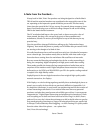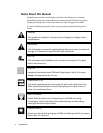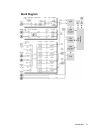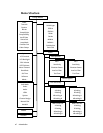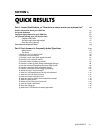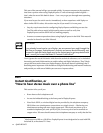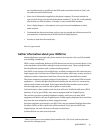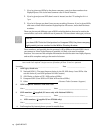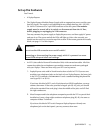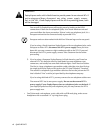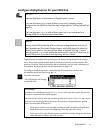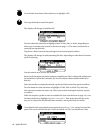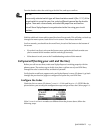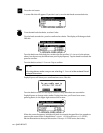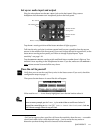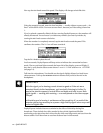
QUICK RESULTS 1-5
Set up the hardware
You’ll need:
· A ZephyrExpress
· The ZephyrExpress Modular Power Supply with an appropriate power cord for your
local AC supply. The supply is self-adjusting for any voltage between 100 - 250 VAC,
50 - 60 Hz. It connects to a 4-pin XLR connector on the rear panel. The modular
supply must be turned off at its switch, or disconnected from the AC line,
before plugging or unplugging its XLR connector.
You may connect the power supply to ZephyrExpress now, and then apply AC power
and turn it on. The screen and all the LEDs will light up. After a few seconds, you
should see the word Status on the top of the screen. If the screen goes dark or totally
blank, see page 1-15 of this chapter.
w
WARNING!
Do not use the XLR connector as an on/off switch!
Connecting or disconnecting the power supply while it is powered can erase
current ISDN setup and other user settings.
· An NT1 (also called a Network Termination Unit) with connection cables. All of the
connection cables have telephone-type modular connectors and come packaged
with your Zephyr. There are three ways your NT1 can be present:
1. ZephyrExpress units sold in North America have a built-in NT1. If you see two
modular-type telephone jacks on the back of your ZephyrExpress, the lower jack
is the NT1. It’s marked U and LINE DIRECT. It uses a standard analog telephone line
cord (type RJ-11 or RJ-14).
If you have this kind of NT1 and a North American ISDN installation, you may
connect them now. If the telco provided a large 8-pin (RJ-45) jack, you should
still use the standard line cord: plug it into the middle of the jack, and it’ll find
the right conductors.
2. Most European and Asian telephone companies provide the NT1 as part of their
installation. It uses a large eight-conductor telephone plug (RJ-45), the same as
computer 10Base-T ethernet.
If you have this kind of NT1 and a European ZephyrExpress with only one
telephone jack on the back panel, you may connect them now.



